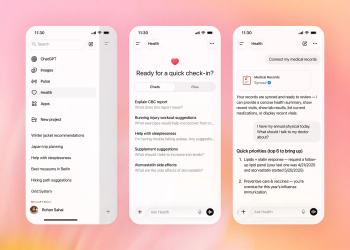
- April 25, 2020 edition
- Volume 97
- Issue 8
Coronavirus practice guide, part 2: Crisis could boost telemedicine use
If the Coronavirus pandemic contains any silver lining for primary care doctors, it may be to speed the adoption of telemedicine and other alternatives to in-person patient visits.
Editor's note: This is one of three articles aimed at helping small practices survive the COVID-19 crisis. The other two articles address:
âIf the Coronavirus pandemic contains any silver lining for primary care doctors, it may be to speed the adoption of telemedicine and other alternatives to in-person patient visits.
While technology enabling doctors to provide some forms of care remotely has been available for decades, adoptions has been slow due to privacy concerns, lack of adequate reimbursement, technology costs and physician inertia. But with patient visits dwindling as a result of the coronavirus pandemic, clinicians have been turning to e-mail, texting, and telemedicine to maintain contact with and provide care for patients. And that could be a positive development to emerge from the current crisis, says Ron Holder, MHA, FACMPE, chief operating officer of the Medical Group Management Association.
“This may be just the impetus needed to prepare for what’s going to be the future of healthcare anyway, Coronavirus crisis or not,” Holder says. And with fewer patients coming in, he adds, “this is your opportunity to try some of the things you may have been wanting to try but hadn’t had the time.”
The federal government is providing additional encouragement to use telemedicine, in the form of increased Medicare reimbursements and a loosening of HIPAA’s privacy, security and breach notification rules.
Getting started
So how should a practice get started with telemedicine? The first step, experts say, is to find a platform-the technology that enables secure, HIPAA-compliant video and audio communication with patients via computer, smartphone or other electronic device.
Platforms typically will provide a method for registering patients, a virtual queue/“waiting room” for patients, and a method of recording and archiving the encounter, explains Russell Libby, MD, a board member of The Physicians Foundation and president of the Virginia Pediatric Group, which has been offering telemedicine visits for a little over a year.
A Google search can yield a great deal of useful information on telehealth platforms and services, Libby says. In addition, The Physicians Foundation has joined forces with the AMA and several state medical societies to form the Telehealth Initiative, a repository of telemedicine-related advice and resources for practices and individual physicians.
Ideally, a telehealth platform will integrate with the practice’s website, so that the process of connecting with a provider is seamless to patients, says Eric Haden, founder and president of the telehealth consulting firm Drexly Health Solutions LLC. “You want to list your providers on the home page and have the patient be able to click on a provider’s name and be entered into the [virtual] waiting room,” Haden explains.
Focus on the basics
Haden advises practices offering telehealth for the first time to focus on simplicity and flexibility. That means using a standalone platform, one that’s not necessarily part of a fully integrated EHR system but whose only function is enabling remote communication with patients.
“The important thing is just to get some clinicians using it now, so you can continue seeing patients,” he says. “Start small and get used to it, then grow and fit it into your practice. I tell my clients, ‘Instead of buying the whole cow now, you just need the milk.’”
At the same time, it’s important that the platform have expansion capabilities so that the practice can add users and functionality in the future. “Some of the products out there only offer solutions for use by individual doctors,” he says. “It’s better to pick an individual solution from a vendor that offers practice-wide capabilities so you can easily integrate with them in the future if you decide to.”
One important caveat for practices using standalone platforms, Haden adds, is that they will need a way to download recordings of patient visits into their EHR so they can be added to the patient’s record.
Given the fluidity of the current situation, Haden also advises against signing a long-term agreement with a vendor, but instead look for one that permits month-to-month contracts and/or offers free trials. “Before investing in any telehealth service, investigate your options,” he says. He also cautions that, with the increased demand for telehealth services, practices can expect waits of a week or more to get set up with a platform. “Normally, it gets done in one to three days,” he says.
Some practices, Haden notes, have a telehealth platform in their current EHR system that they aren’t using. If so, he says, now is the time to try it out-unless the vendor charges exorbitant fees or requires a long-term contract for setting it up and using it.
Impact on staffing, workflow
Extensive use of telemedicine services most likely will be accompanied by changes in a practice’s workflow and staff responsibilities, and possibly require some physical alterations. “People are going to have to assume different roles depending on each practice’s circumstances,” says MGMA’s Holder. He cites the example of a nurse who, finding she’s spending less time performing hands-on patient care, instead triages requests coming through the practice’s patient portal and deciding which provider they should be routed to.
In addition, Holder says, practices will need to ensure that every clinician has access to space where they can conduct telehealth visits in private, so as to comply with HIPAA privacy rules.
Once a practice has acquired telemedicine capabilities, the next step is informing patients. The most effective ways to do this, says Holder, is via e-mail and/or the practice’s website. Both methods should explain the service, contain instructions for how to register for it, and include a link for accessing the virtual waiting room.
In addition to telehealth, doctors can use e-mails and text messages for remote communication. In order to be HIPAA-compliant, however, e-mail correspondence must take place through a patient portal, while text messages require the use of a secure server that encrypts the messages. Some telehealth vendors will include these technologies in their platforms for an additional fee, Haden says.
Experts predict that practices adopting telehealth in response to the coronavirus pandemic will soon come to see its advantages, starting with happier patients. “My clients have found that once their patients experience telehealth their satisfaction levels are through the roof, and they never want to go back to the old way of receiving care,” says Haden.
Libby notes that introducing telehealth is an opportunity for reducing care costs while improving outcomes. By making it easier for practices to check on and monitor patients with chronic conditions, telehealth can reduce emergency department visits-an outcome especially important to a practice in an ACO or paid under some form of universal capitation.
“This is opening the box, and doctors are seeing it’s a comfortable box to be in,” Libby says. “They can use it to benefit their patients, their practice, and their community.”
Articles in this issue
over 5 years ago
How to fix the primary care crisisover 5 years ago
8 tips for avoiding employee handbook crisesover 5 years ago
Finding mobile health apps that work for doctors and patientsNewsletter
Stay informed and empowered with Medical Economics enewsletter, delivering expert insights, financial strategies, practice management tips and technology trends — tailored for today’s physicians.








